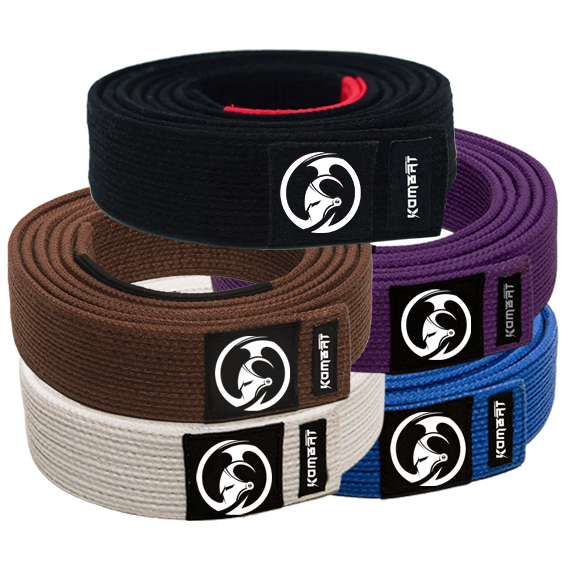When it comes to choosing the thickness of your Bjj Belts, there are a few factors to consider, and it ultimately depends on your personal preference and comfort. Both thicker and thinner belts have their advantages, so let’s explore the pros and cons of each to help you make an informed decision:
Thicker BJJ Belt
Pros:
-
Durability: Thicker belts are often sturdier and may last longer due to their robust construction. They can withstand the rigors of training and rolling.
-
Prominence: Thicker belts tend to look more substantial, which can be a matter of personal pride and a symbol of your dedication and advancement in BJJ.
-
Stays Tied: Thicker belts can hold their knots better, preventing them from coming undone during training or competitions.
Cons:
-
Stiffness: Some people find thicker belts to be stiffer and less comfortable, especially during long training sessions. They might take longer to break in.
-
Bulkiness: Thicker belts can feel bulkier around your waist, potentially impeding your movement or comfort.
Thinner BJJ Belt
Pros:
-
Flexibility: Thinner belts are often more flexible and comfortable right from the start, making them easier to tie and wear during training.
-
Lightweight: Thinner belts are typically lighter and less bulky, allowing for greater freedom of movement on the mat.
-
Cooler: Thinner belts can feel less hot and restrictive during intense training, which can be particularly beneficial in warm climates.
Cons:
-
Less Prominence: Thinner belts may appear less substantial, and some practitioners might prefer a more significant, noticeable belt.
-
Durability: Thinner belts may wear out faster, requiring more frequent replacement.
Ultimately, the choice between a thicker and thinner Bjj Belts depends on your personal comfort, style, and priorities. If you value durability and a prominent appearance, a thicker belt may be the way to go. If comfort, flexibility, and a lighter feel are more important to you, a thinner belt might be the better option.
Many BJJ practitioners start with a standard belt and, over time, acquire belts of varying thicknesses to suit different training conditions. It’s essential to find what works best for you, as your belt is not just a symbol of your rank but also a tool for comfortable and effective training.

